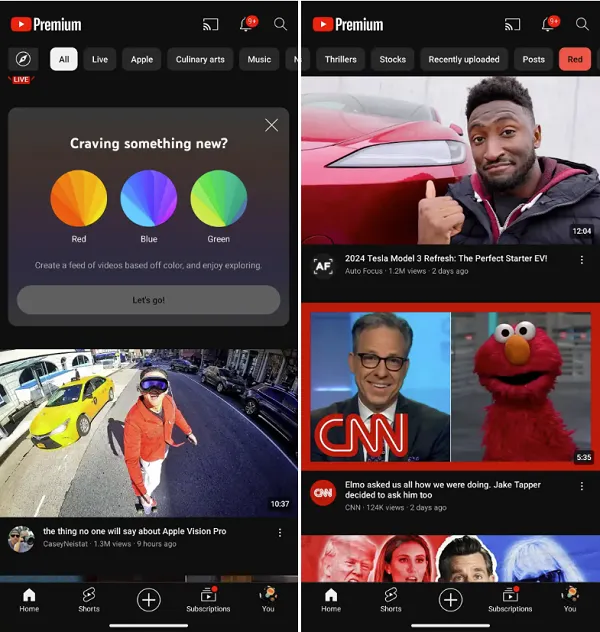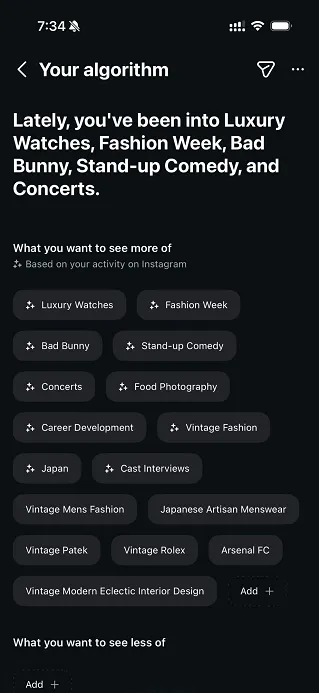YouTube’s trying out a new way to give users more control over the videos they see in their home feed, via a feed customization option that would enable you to update your algorithmic recommendations through conversational prompts.
Which sounds similar to the algorithm training options being built by both X and Instagram, using AI chat tools to give users more specific insight into their recommendations.
As explained by YouTube:
“We’re experimenting with a new feature called ‘Your custom feed,’ that lets you customize recommendations for your Home feed. If you are part of the experiment, you will see ‘Your Custom Feed’ appear on your Home page as a chip besides ‘Home’. When you click into it, you can update your existing Home feed recommendations by entering a simple prompt.”
YouTube says that the feature is designed to give you a simple way to exert more control over your suggested content.
It’s only in testing for now, so you probably won’t see it in your feed, but if you do, it could be worth trying out, to see how well the system refines your YouTube feed based on your input.
And while it seems like YouTube is taking a different, AI-based approach this time around, it has actually tried various feed customisation options before. A couple of years back, YouTube prompted some users to “Customize Your Feed,” via an in-app prompt that enabled you to select videos that you like, which would then help to inform YouTube’s algorithms.
It also gave Premium subscribers optional color-based feeds (for some reason) last year, as a means to give people alternate input into their recommendations.

But this initiative does sound more like the current experiments at X, Threads and Instagram, which will eventually enable people to use conversational prompts to refine their feeds, by posting their queries to in-app AI bots, or selecting custom topic elements in new, dedicated algo refinement elements..

Which is good. More direct input will help to address the ongoing concerns that algorithms are dictating too much of the social media experience, while they may also give users another way to ensure that they see more posts from the accounts that they follow, based on these tools.
If people use them, that is. I’ve noted this before, but the truth is that for the vast majority of users, they’re not going to update and change their settings, they just want to log in and scroll through and see what the system serves up. Sure, people might say that they want more control, but time and time again, when given the opportunity, most people simply don’t bother to update their settings, even when they can.
Add to this the fact that platforms drive more engagement from AI-powered algorithms, which show you more content similar to that which you’ve spent time watching or engaging with, and you can see why social apps would prefer that users just stick to their “For You” feeds.
Which begs the question as to why they would even bother adding these types of controls in at all, but for one, it does give users the option, which could improve their experience, while it also serves as a level of assurance, that you could change it, if you wanted to.
That lessens criticism over algorithm control, while, for the most part, also enabling platforms to maximize engagement through algorithmic means.



